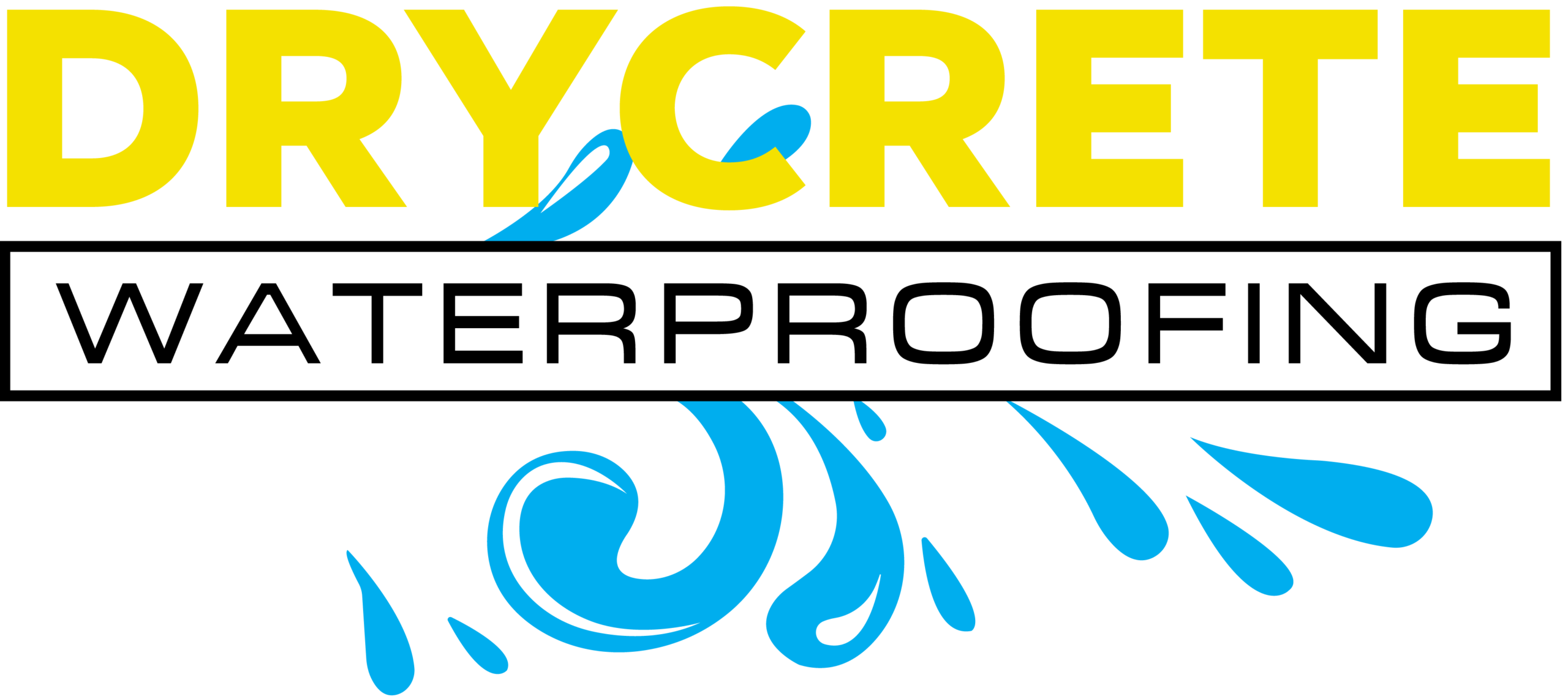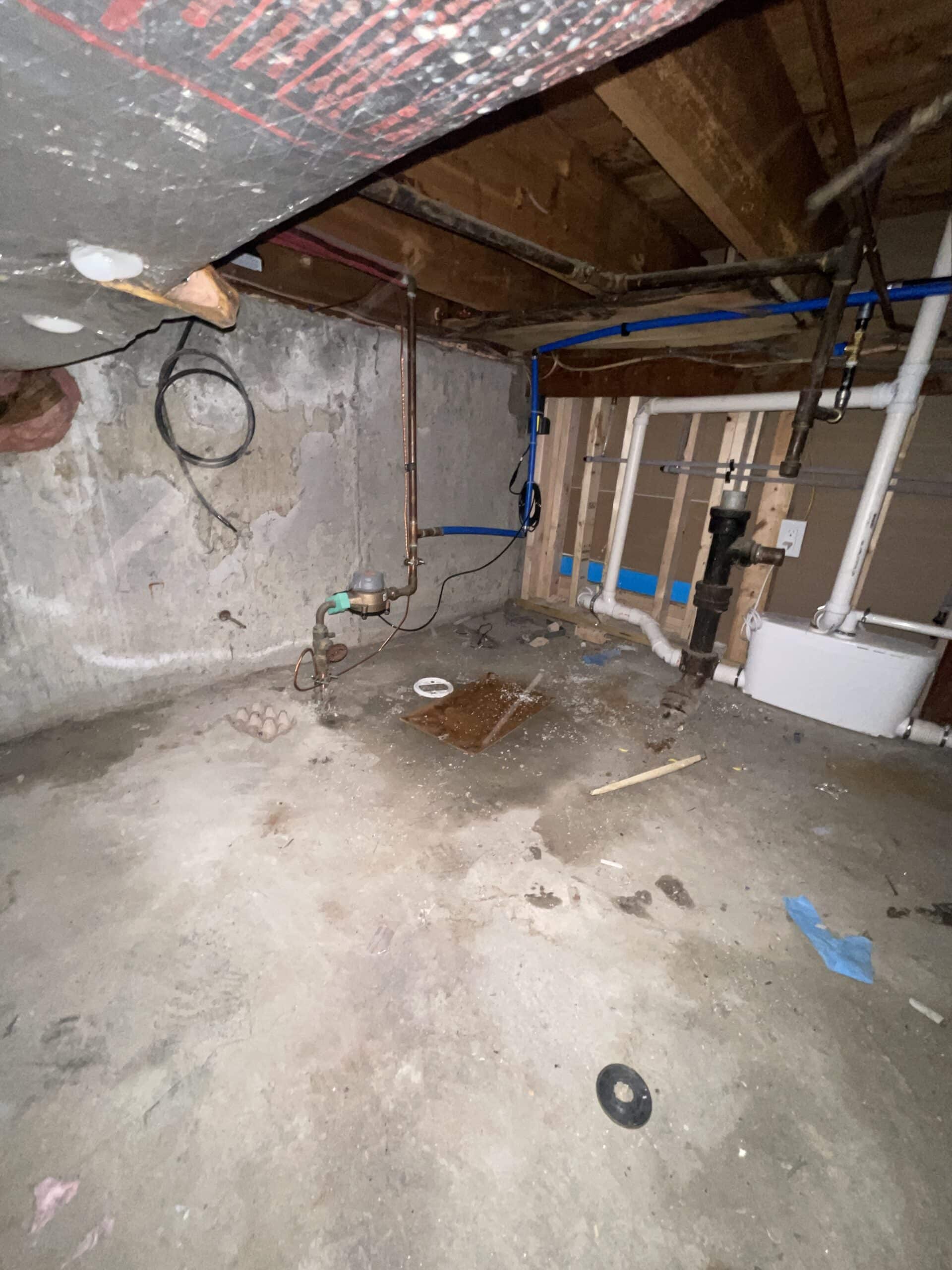Just because your home may not have a traditional basement doesn’t mean that you can’t benefit from some under-home work. Crawlspace waterproofing can bring many of the same benefits to your property as basement waterproofing including boosting structural stability, improving air quality and eliminating nasty smells.
What Is A Crawlspace?
As the name suggests, a crawlspace is a low space located within the foundations of a home, typically beneath the first floor and above the ground. It is not as deep as a basement and is often used for accessing plumbing and electrical systems. They’re typically 3-4 feet high, allowing enough room to crawl about below your floors.
Crawlspaces are most common in damp environments because they elevate a home above waterlogged soil, helping to keep the interior dry. They also provide an effective flood defense by protecting the floors from rising water. However, crawlspaces are often damp and moldy, which is a widely accepted notion. Many homeowners may not realize that this condition can significantly impact the rest of their home.
Why Waterproof Your Crawlspace?
Much like your basement, waterproofing a crawlspace is a great idea for the sake of increasing structural stability and eliminating a prime breeding ground for the molds which can threaten your family’s health.
Sealing your crawlspace can work wonders in regards to improving internal air quality and provide you with a handy place to store all that stuff you just can’t quite come to part with but don’t want cluttering up your home.
Potential issues include:
- Mold and Mildew Growth
- Pests
- Wood Rot
- Rust
- Damage to living areas
- Structural damage
- Decreased property value
Signs of Waterproofing Issues In Your Crawlspace
Now that we’ve established what can be gained from ensuring your crawlspace is waterproofed, what are the warning signs to look out for that tell you it’s time to act?
Musty Odors:
An ‘earthy’ smell emanating from under your floors could well be a sign that you’re facing a damp crawlspace. It’s hard to describe in writing, but you’ll know ‘musty’ when you smell it.
Mold Growth:
If you find black spots growing on the walls or wood in your crawlspace, it’s a sure sign that dampness is getting in. If your home is particularly damp or humid, this could spread to other areas.
Damp Insulation:
Damp or waterlogged insulation is much less efficient in keeping heat in your home than when it’s dry, costing you considerably more in utilities and providing a great environment for mold.
If you notice any of these issues, it’s time to consider your options.
Causes of Crawlspace Moisture
Once you’ve established that you are facing a crawlspace water problem, the next step is to ascertain where the moisture is coming from. Likely candidates include:
Ground Water Seepage:
All soil contains a certain level of water. During heavy rains, this level will rise until the earth can’t absorb any more. When this happens beside your home, the water will seep through the hard-packed dirt your home is built on and into your crawlspace.
Making matters worse, the nature of crawlspaces as a dark, nearly sealed environment means that it often cannot evaporate away as effectively as the surrounding earth.
Condensation:
Just like the soil around your home, all air contains a certain level of moisture in the form of water vapor. When this humid air touches a cold surface (like the walls of your foundation) the moisture will form condensation as it turns back into a liquid. This builds up until it can cause serious problems.
As an unheated space which never gets direct sunlight, crawlspaces are prime candidates for condensation formation.
External Flooding:
With the increase in extreme weather events, this is becoming more of an issue each season. Heavy rains and waterlogged soil can lead to water pooling, or even flowing, towards your crawlspace.
While crawlspaces are intended to keep your living area safe from these waters, a lack of waterproofing can leave them vulnerable.
Methods of Crawlspace Waterproofing
Now that we’ve looked at the causes and effects of moisture collecting under your home, it’s time to consider how to waterproof a crawlspace. Many of your options here are similar to methods which may be employed to waterproof a basement too.
Vapor Barriers
Vapor barriers consist of a semi-permeable membrane which allows water vapor to pass through but will block liquid moisture. This allows your home to ‘breathe’ and can work wonders in reducing mold growth and condensation.
There are various different types with varying levels of permeability, each of which serves a slightly different purpose.
- Asphalt backed paper, paints, elastomeric coatings: These are, to all intents and purposes, impermeable and will do a great job of stopping liquid seepage, though they may leave you vulnerable to condensation formation.
- Foil, plastics and similar sheet materials: These come in varying levels of permeability.
The concept behind barriers such as these is that it is impractical to totally avoid a building becoming wet- rain happens- and it’s best to control where that water is allowed to flow.
Sump Pumps
Sump pumps consist of a pit which sits under your home and contains a pump controlled by a float-switch. When this pit fills with groundwater to the level that the switch is activated, the pump turns on and moves water out and away from your home.
While they’re really very effective in dealing with surging groundwater levels, it’s a good idea to ensure that they have a back-up battery system or generator. Unfortunately, relying on an electrical supply makes them vulnerable to power outages which are most likely to occur just when the pump is most needed.
Dehumidifiers
Dehumidifiers absorb moisture from the air and ‘dehumidify’ it. This means that they’re great at dealing with condensation caused by humid environments.
There are a few different varieties of dehumidifier on the market but by far the most common is the electrically powered refrigeration model. Because humidity turns to condensation when it comes into contact with a cool surface, these work by chilling a coil and drawing the air over it.
Encapsulation
Encapsulation is a process that combines vapor barriers, the sealing of crawlspace vents, and the installation of a dehumidifier. The vapor barriers prevent water ingress, the sealed vents keep humid air from entering, and the dehumidifier addresses any vapor that might still find its way inside.
Encapsulation also offers an excellent opportunity to insulate your crawlspace, which can reduce heating costs. While this process does seal the crawlspace, it doesn’t make it completely inaccessible. However, using it for storage or accessing wires, pipes, and other utilities might require more care to avoid damaging the protective barriers.
Drainage Systems
Drainage systems include things like guttering and downspouts, French drains, and sump pumps. They allow water an easy path to flow away from problem spots to where it can do no harm.
Comparing Methods
Which method of crawlspace waterproofing you opt for will depend on various considerations such as the nature of the problem you’re facing, how functional you need your space to be and, of course, budget.
- Vapor barriers will deal with seepage relatively well, but choosing the wrong material could exacerbate problems with condensation. They’re not hugely expensive to install.
- Sump pumps will, if properly installed, eliminate problems with rising groundwater but won’t help with humidity and condensation. They have a decent initial outlay, especially if you go for a battery back-up.
- Dehumidifiers will remove issues around condensation, but they won’t help with other problems at all.
- Drainage systems will help you tackle problems with flood waters and heavy rains, but won’t help with condensation at all. Depending on exactly what you need installed, they can vary hugely in price.
- Encapsulation ticks all the boxes but costs significantly more than any other choice.
Maintaining A Waterproofed Crawlspace
Whatever option you go for, it will require maintenance on an ongoing basis to remain effective.
This may take the form of regular inspections to ensure that it’s continuing to do its job. Keeping up with these tasks will keep your crawlspace waterproofing in working order, ensuring your home is protected.
If you notice a resurgence of dampness problems or new ones forming (say, problems with condensation after installing barriers) then it’s best to consult a professional for a full assessment before undertaking any work.
While we’ve gotten used to the idea of crawlspaces being dank, dark musty places that are home to bugs, rats and mice, with a little effort they really don’t have to be. The effects of proper crawlspace waterproofing on the rest of your home can be profound.

